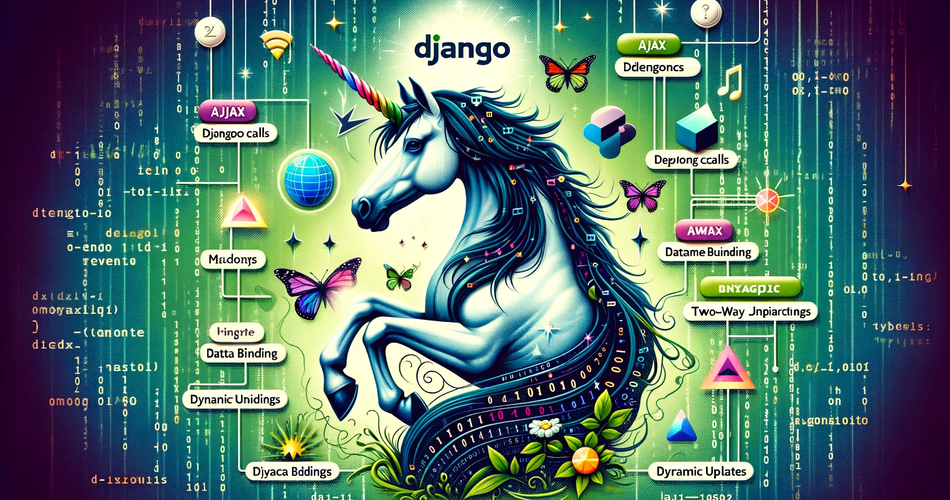Django, a high-level Python web framework, has been lauded for its ability to encourage rapid development and clean, pragmatic design.
It has been a staple tool for web developers seeking efficiency and a robust set of features for building web applications.
This article aims to introduce Django-Unicorn, a magical addition to the Django ecosystem that promises to bridge the gap between traditional Django applications and the interactive experiences provided by modern JavaScript frameworks.
We will explore Django-Unicorn's capabilities, how it integrates with Django, and why it might be the secret ingredient your web projects have been missing.
What is Django-Unicorn?
Django-Unicorn is a full-stack framework for Django that provides an innovative approach to enhancing traditional Django views.
Its main goal is to simplify the addition of interactivity to Django projects by allowing developers to create reactive web applications with minimal JavaScript.
By integrating seamlessly with Django's backend logic, Django-Unicorn enables real-time functionalities such as dynamic form submission and partial page updates.
This is achieved through a combination of AJAX, two-way data binding, and server-side rendering, all within the familiar and powerful Django environment.
Django-Unicorn essentially extends the capabilities of Django, making it easier to build modern, interactive web applications without leaving the Django ecosystem.
Core Features
Django-Unicorn comes with several compelling features that position it as a robust solution for adding interactivity to Django projects:
- AJAX Calls: It facilitates automatic AJAX requests, allowing web pages to update asynchronously by exchanging data with the server behind the scenes. This means parts of a page can be updated without having to reload the entire page.
- Two-Way Data Binding: This feature synchronizes the data between the frontend and backend seamlessly. When a user input updates, the corresponding backend data changes, and vice versa, without additional code.
- Dynamic DOM Updates: Django-Unicorn can dynamically update the Document Object Model (DOM) based on user interaction or backend processes, similar to how React's Virtual DOM works.
Compared to SPA frameworks like React or Vue, Django-Unicorn doesn't require a separate set of tools or languages.
While React and Vue offer more extensive frontend capabilities, they also require a greater investment in learning and setting up the environment.
Django-Unicorn, on the other hand, offers a subset of these features directly within Django's templating system, aiming for a balance between functionality and simplicity.
Components and Templates
Components in Django-Unicorn are discrete units of functionality that encapsulate both logic and presentation.
They are akin to components in frameworks like React, where each component manages its own state and behavior.
In Django-Unicorn, a component is a Python class that contains attributes and methods to handle its internal logic, along with an associated HTML template for its presentation.
Templates in Django-Unicorn are tied to their components, rendering the UI based on the state of the component.
They are Django templates with added functionalities that can use loops, conditionals, and template tags and filters.
Here's a basic example of how a Django-Unicorn component might look:
# unicorn/components/hello.py
from django_unicorn.components import UnicornView
class HelloView(UnicornView):
name = "World"
greeting = ""
def greet(self):
self.greeting = f"Hello, {self.name}!"
And its corresponding template:
<!-- unicorn/templates/unicorn/hello.html -->
<div>
<input type="text" unicorn:model="name"/>
<button unicorn:click="greet">Greet</button>
<p>{{ greeting }}</p>
</div>
In this snippet, unicorn:model binds the input to the name property of the component, and unicorn:click binds the button click to the greet method.
The method updates the greeting property, which is rendered in the paragraph tag.
This demonstrates the ease of creating interactive UI elements with Django-Unicorn.
This article is for paid members only
To continue reading this article, upgrade your account to get full access.
Subscribe NowAlready have an account? Sign In

